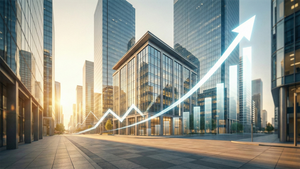
Feature Image: [Placeholder for an image of silver bars or a silver chart with an upward trend]
Delhi's bullion market witnessed a monumental event on Thursday, September 25, 2025, as silver prices surged to an unprecedented Rs 1.40 lakh per kilogram. This record-breaking rally, largely sustained since September 23, marks a significant milestone in the precious metals market, signaling robust upward momentum for the white metal. The rally stands in stark contrast to gold's more mixed performance in the local market, highlighting a historic divergence in their trajectories.
This extraordinary surge in silver is not an isolated incident but the culmination of powerful global trends, burgeoning industrial demand, and shifting investor sentiment. As the world grapples with economic uncertainties and pivots towards green technologies, silver's dual identity as both a safe-haven asset and a critical industrial commodity is propelling it into uncharted territory, reshaping market dynamics and presenting both opportunities and challenges across various sectors.
The White Metal's Unstoppable Rise: A Deep Dive into the Rally
Silver's ascent to Rs 1.40 lakh per kg in Delhi on September 25, 2025, is the peak of a sustained bull run throughout the year, driven by a confluence of macroeconomic and fundamental factors. By September 24, international spot silver prices had already climbed to $41.8 per ounce, reaching its strongest level since 2011, culminating in a surge to $45.03 per ounce on the day of the record. This impressive performance saw silver post a remarkable 51% gain year-to-date by September 24, significantly outpacing gold.
A primary catalyst for this rally is the insatiable industrial demand for silver. The metal is indispensable in rapidly expanding sectors such as solar panels (photovoltaic applications), electric vehicles (EVs), and advanced electronics, with the rise of artificial intelligence further boosting electricity requirements and related infrastructure. Global silver demand reached an all-time high of 1.2 billion ounces in 2024, with industrial consumption surging 7% to 700 million ounces, a trend expected to continue through 2025. This robust demand is set against a backdrop of persistent supply deficits, with the silver market facing its fifth consecutive year of deficit in 2025, estimated at 117.6 million ounces. This scarcity underpins the upward price pressure.
Further bolstering silver's appeal are the expectations of interest rate cuts by the U.S. Federal Reserve, hinting at a dovish outlook and anticipation of further monetary easing into late 2025. This keeps liquidity strong, making non-yielding assets like silver more attractive. A weakening US Dollar Index, which has shed 11-12% in 2025, coupled with global uncertainties and geopolitical tensions, has also fueled safe-haven buying. On the day of the record, the December contract for silver on the Multi Commodity Exchange (MCX) surged by ₹3,528 (2.63%) to ₹1,37,530 per kg.
In contrast, gold's performance on September 25, 2025, in Delhi, showed a "historic divergence." While silver soared, 24-carat gold (99.9% purity) dropped by ₹630 to ₹1,17,370 per 10 grams, and 99.5% purity gold fell by ₹700 to ₹1,16,700 per 10 grams due to "poor offtake by retailers" and cautious profit booking. Globally, however, gold still showed positive, albeit marginal, movement, with December futures up slightly to $3,768.82 per ounce. It's crucial to note that gold has also had an extraordinary rally throughout 2024 and 2025, reaching an all-time high of approximately $3,791.11 per ounce on September 23, 2025. However, silver's percentage gains in 2025 have been more pronounced, largely due to its significant industrial applications.
Corporate Fortunes: Who Wins and Who Loses?
The record-breaking rally in silver prices creates a distinct landscape of winners and losers among public companies across various sectors.
Winners:
Silver mining companies are the primary beneficiaries. Higher market prices translate directly into increased revenue and expanded profit margins. Companies like Hecla Mining Company (NYSE: HL), Pan American Silver Corp. (NASDAQ: PAAS), described as the world's premier silver mining company, and First Majestic Silver Corp. (NYSE: AG) are seeing significant boosts. Coeur Mining, Inc. (NYSE: CDE) and Endeavour Silver Corporation (NYSE: EXK) also benefit from increased per-ounce realizations. Streaming companies like Wheaton Precious Metals Corp. (NYSE: WPM), which purchase silver at fixed lower prices, see their profit margins widen considerably. Indian major Hindustan Zinc Ltd (NSE: HINDZINC), as the world's third-largest silver producer, directly benefits from rising prices.
Investment vehicles, particularly Exchange-Traded Funds (ETFs) that track silver, are also direct beneficiaries. The iShares Silver Trust (NYSEARCA: SLV) and abrdn Physical Silver Shares ETF (NYSEARCA: SIVR) see their asset values increase substantially. ETFs that invest in silver mining stocks, such as the Global X Silver Miners ETF (NYSEARCA: SIL) and iShares MSCI Global Silver and Metals Miners ETF (NYSEARCA: SLVP), also experience significant gains as miners act as leveraged plays on the metal's price.
Losers:
Industries heavily reliant on silver as a critical input face increased costs. Manufacturers in the solar panel sector, such as those in China's burgeoning solar industry, face margin compression despite efforts to reduce silver content per panel. Companies producing electronics (e.g., printed circuit boards, connectors) and electric vehicles (EVs), including major players like Tesla (NASDAQ: TSLA) and BMW (FWB: BMW), will see their manufacturing costs rise as EVs utilize significantly more silver than conventional vehicles. While some adaptation through "thrifting" (reducing silver content) is possible, the exponential growth in these sectors ensures overall silver consumption remains high.
The jewelry industry also faces challenges. A significant increase in silver prices directly leads to higher production costs for manufacturers and retailers. Brands featuring extensive sterling silver collections, from luxury to mass-market, will experience higher material acquisition costs. This can translate into increased retail prices, potentially reducing consumer demand due to price sensitivity. Manufacturers and wholesalers operating on thin margins may be forced to absorb costs or pass them on to consumers, slowing sales.
Wider Significance: A New Era for Precious Metals
Silver's record-breaking rally is deeply embedded within broader industry trends, signaling a transformative period for precious metals. While gold remains the traditional safe-haven, silver's unique industrial demand profile distinguishes its current surge. Silver has notably outperformed gold in 2025, partly due to its role in green energy and technology. The gold-to-silver ratio, hovering around 84, remains above its 20-year average of about 60, suggesting silver is still relatively undervalued and has significant room to catch up.
The ripple effects are profound. For competitors like gold, silver's outperformance has led some analysts to suggest reallocating portfolios with a higher proportion of silver. Platinum has also seen a significant run-up, with 37% gains in 2025, indicating a broader re-evaluation of white metals. For partners and industrial users, the rally underscores a persistent supply deficit, with silver being a crucial component in India's ambitious renewable energy targets and expanding tech sector. This scarcity could lead to higher input costs for manufacturers, impacting production costs and consumer prices.
Regulatory bodies are also taking notice. India has tightened its import policy for precious metals, classifying high-purity silver bars under a "Restricted" category to curb unauthorized inflows and promote legal trading. The United States placing silver on its list of "critical minerals" highlights its growing strategic importance, potentially leading to national stockpiling and influencing global trade policies. These regulatory shifts aim to manage supply chains and ensure market transparency.
Historically, silver has seen spikes during economic crises and high inflation, such as the 2008 financial crisis and the COVID-19 pandemic. However, the current rally is particularly distinguished by robust and growing industrial demand from green energy and EVs, alongside persistent supply deficits. This dual demand (investment and industrial) is a powerful driver that sets this rally apart, making it a more structurally supported and potentially longer-lasting uptrend.
What Comes Next: Navigating the Silver Horizon
The short-term outlook for silver suggests continued volatility but with a strong underlying bullish trend. After rallying nearly 17% in the last three weeks, a potential short-term correction is possible as prices reach overbought levels. However, support remains firm, and the broader trend is upward, with some analysts targeting ₹1,35,000-1,40,000 per kg by December 2025, and international predictions eyeing $50 per ounce. The US Federal Reserve's interest rate decisions and ongoing geopolitical tensions will continue to influence immediate price movements.
Long-term possibilities for silver are overwhelmingly bullish. Industrial applications in solar, EVs, and consumer electronics are projected to drive sustained demand, with the solar sector alone potentially consuming nearly all known silver reserves by 2050. Persistent supply deficits, coupled with declining mine supply and new discoveries, will continue to intensify upward price pressure. Technically, silver has formed a "cup-and-handle" pattern on yearly charts, suggesting a significant breakout. A decisive break above $50 could propel the rally towards the $100 region, with some bold forecasts even suggesting $130 per ounce in the longer term.
Strategic adaptations are crucial for various stakeholders. Miners must invest in exploration and development to address deficits, focusing on operational efficiency. Industrial users need robust supply chain management and continued innovation to reduce silver content or find alternatives. Investors might consider diversifying portfolios with a higher allocation to silver, given its upside potential and volatility. Governments will likely continue to implement critical minerals policies and trade regulations to secure supply and manage market dynamics.
Emerging market opportunities are abundant in the green economy transition, particularly in Asian markets like India, which are seeing increased investor interest and demand. Technological advancements in AI and 5G also create new demand streams. However, challenges include persistent supply constraints, the price inelasticity of industrial demand, and the sensitivity of industrial demand to global economic cycles.
Comprehensive Wrap-up: A New Chapter for Silver
Silver's record-breaking rally to Rs 1.40 lakh per kg marks a pivotal moment in the precious metals market. Key takeaways include the robust industrial demand from green technologies, dovish monetary policies, safe-haven appeal, and a narrowing gold-silver ratio, all contributing to its unprecedented surge. Silver has clearly outperformed gold in percentage terms this year, asserting its unique value proposition.
Moving forward, the market is poised for continued strength, albeit with inherent volatility. While short-term corrections are possible, the underlying fundamentals of strong industrial demand and persistent supply deficits suggest a sustained bullish environment. Long-term price targets are ambitious, with many analysts forecasting silver to reach or exceed $50 per ounce, and potentially much higher in the coming years, driven by its critical role in the global energy transition.
This rally signifies a "transformative period" for the silver market, where its dual identity as both an investment asset and a vital industrial commodity provides robust fundamental support. For investors, silver offers valuable diversification and a leveraged hedge against broader market risks, particularly in an era of technological advancement and economic uncertainty.
In the coming months, investors should closely watch the Federal Reserve's monetary policy trajectory, industrial demand metrics (especially from solar, EV, and electronics), the evolving geopolitical landscape, and inflation rates. Crucially, monitoring key price levels, particularly a sustained breakout above the $45-$50 resistance zone, will be essential for identifying the next major leg of this historic rally. The current silver rally represents a dynamic interplay of monetary, economic, and industrial forces, making it a critical asset to watch for investors in the coming months and years.
This content is intended for informational purposes only and is not financial advice




